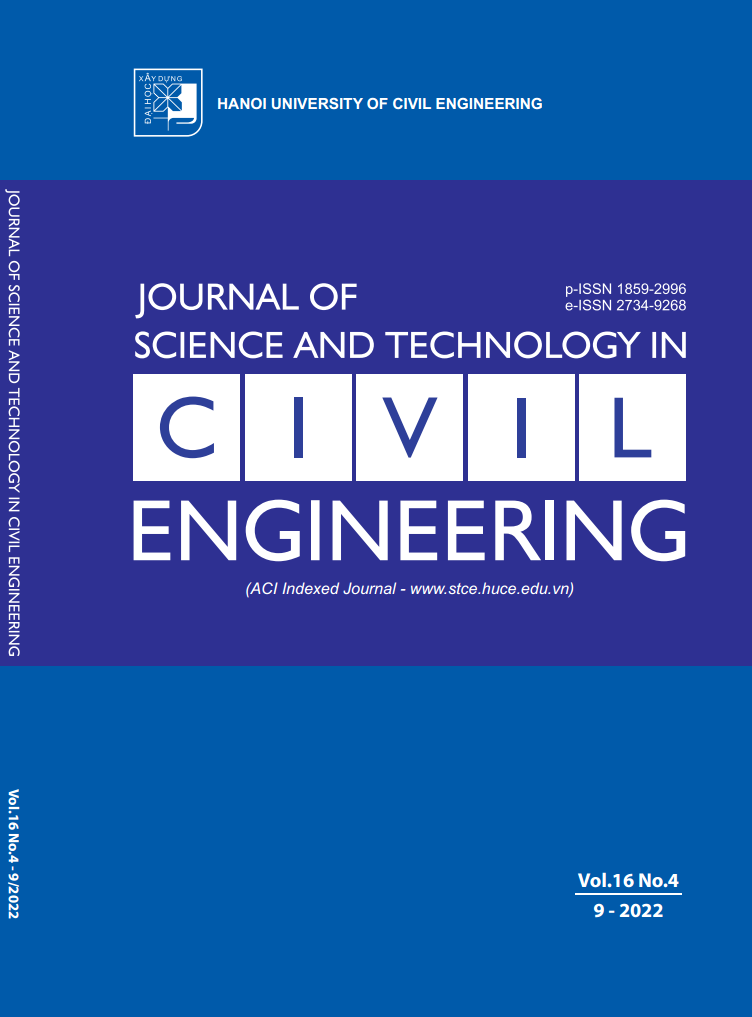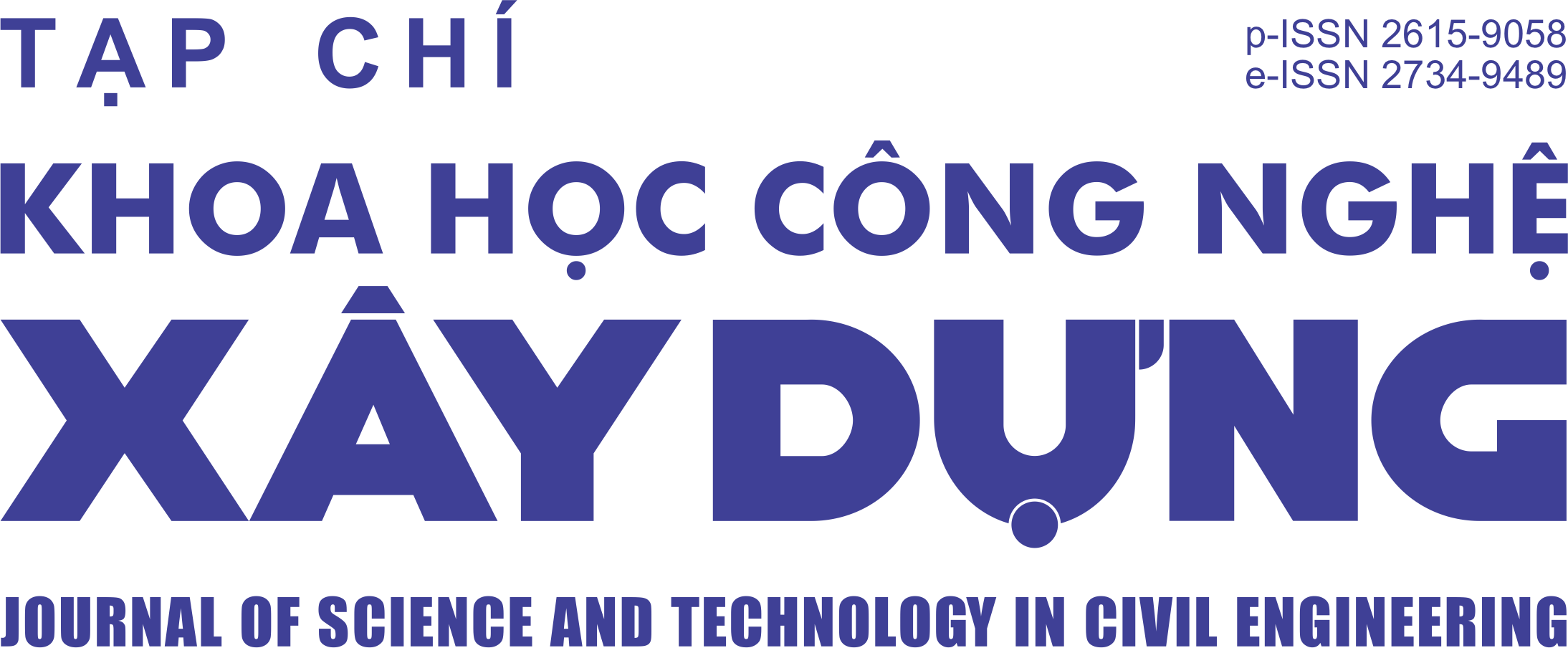Prediction of reinforced fly ash concrete columns’ behavior under eccentric loads using Gaussian process regression
Abstract
Fly ash has been increasingly utilized in concrete industry owing to its advantages in improving workability of fresh concrete and some properties of harden concrete, reducing material cost and adapting sustainable construction requirements. This article introduces a Gaussian process regression using machine learning approach to predict the behavior of reinforced fly ash concrete (RFAC) columns in the form of axial load (N) - mid-height lateral displacement (∆) relation curve. A dataset collected from an experimental study conducted by the authors and checked to be in accordance with TCVN 5574:2018, is used to train the model with the ratio of 10%. Once being well validated by the remaining 90% of the dataset, it is shown that the model is capable of predicting the N-∆ curves so that the behavior of the tested RFAC columns when subjected to various levels of load eccentricity can be observed and the ultimate resistance of the columns under such condition can be determined.
Downloads
Copyright (c) 2022 Hanoi University of Civil Engineering

This work is licensed under a Creative Commons Attribution-NonCommercial-NoDerivatives 4.0 International License.
1. The Author assigns all copyright in and to the article (the Work) to the Journal of Science and Technology in Civil Engineering (JSTCE) – Hanoi University of Civil Engineering (HUCE), including the right to publish, republish, transmit, sell and distribute the Work in whole or in part in electronic and print editions of the Journal, in all media of expression now known or later developed.
2. By this assignment of copyright to the JSTCE, reproduction, posting, transmission, distribution or other use of the Work in whole or in part in any medium by the Author requires a full citation to the Journal, suitable in form and content as follows: title of article, authors’ names, journal title, volume, issue, year, copyright owner as specified in the Journal, DOI number. Links to the final article published on the website of the Journal are encouraged.
3. The Author and the company/employer agree that any and all copies of the final published version of the Work or any part thereof distributed or posted by them in print or electronic format as permitted herein will include the notice of copyright as stipulated in the Journal and a full citation to the Journal as published on the website.







